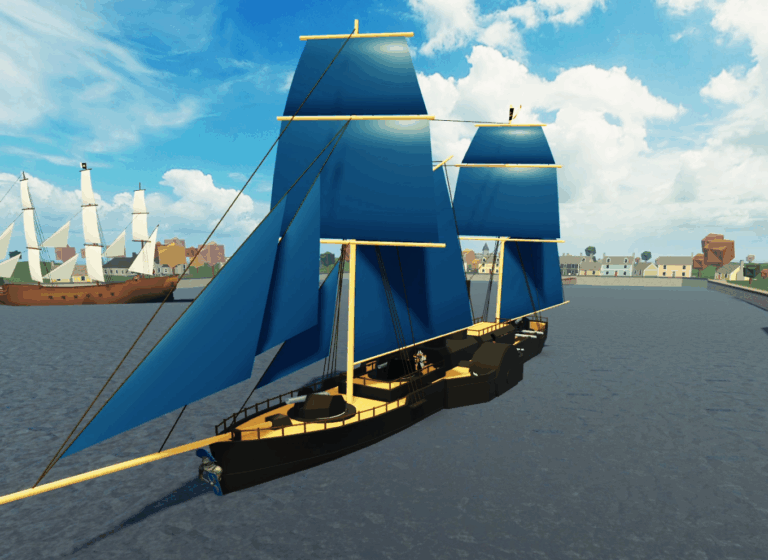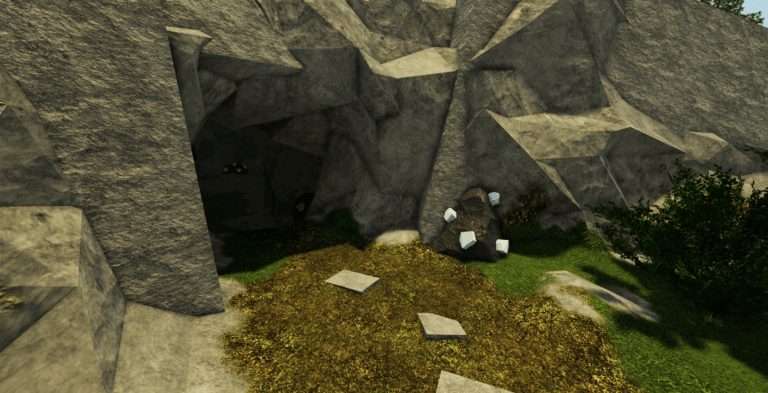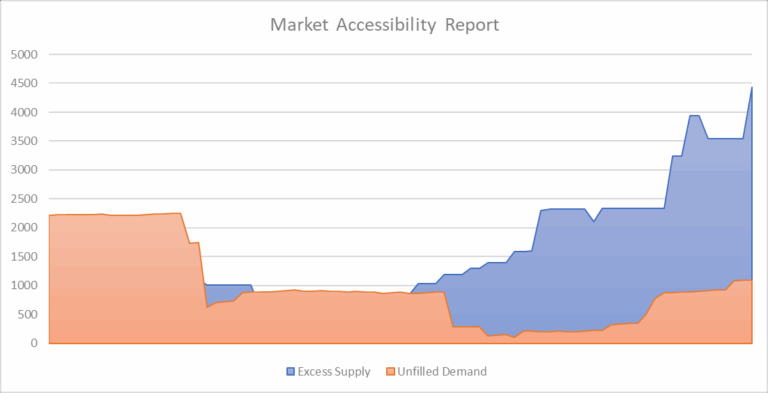Tradelands Economic Update – July 3, 2025
The economy of Tradelands added 1,57 Billion in transactions in June. This is a drop of 17% from the same time in 2024. This is attributed to poor performance of the ship variant and the lack of any significant changes to the economy last month, including the delay of a highly anticipated create release that often starts at the end of June.
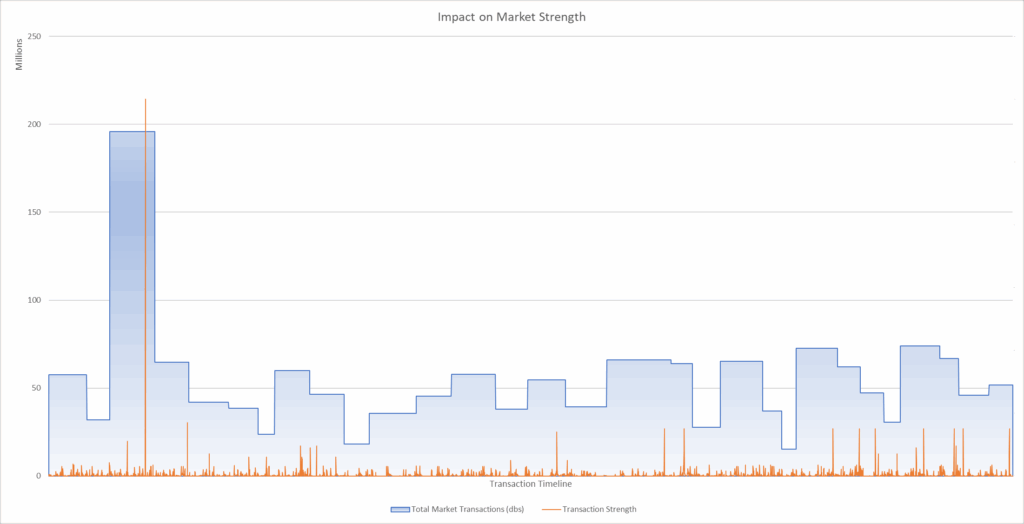
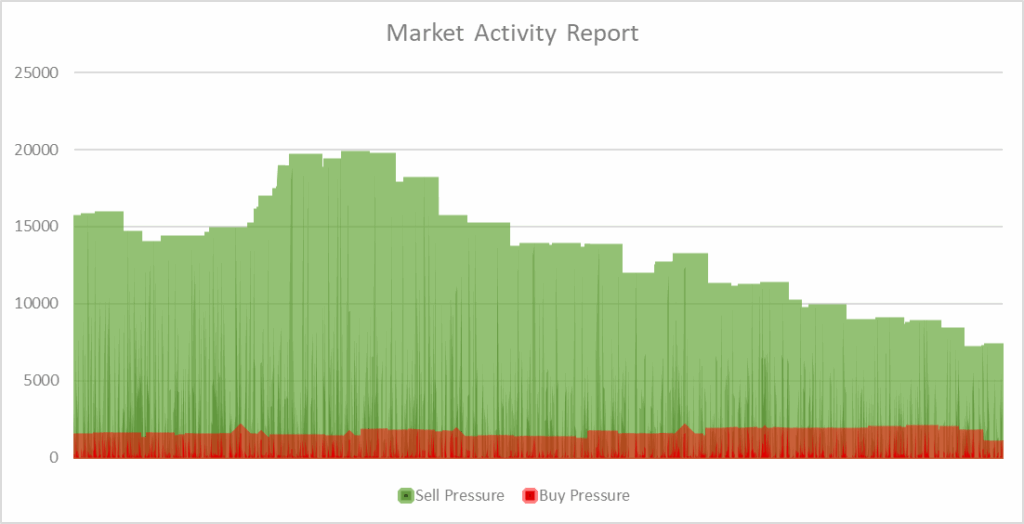
June represents a missed opportunity, with buyer interest already hitting a historic low in May 2025, with the expectation that buyers are saving up for new items to be introduced. However, this didn’t happen, and as a result the seller interest began to decline. The peak in Sell Pressure occurred when the new ship variant was released, and started a slow and steady fall after that point. As the Market Activity Report shows, the lack of buyer demand is causing a self-correcting mechanism with sell pressure as it heads towards equilibrium.
The Helios Staff
The one bright spot this month was the release of a new ship variant, the Helios. With the variant came a new item, the Helios Staff Blueprint. Based on the market analysis done on the ship, it was shown that the Helios Staff Blueprint would have to hit a sustained price point of $1M to break even on the purchase. Unfortunately, while the staff did perform better than most other items, it did not accomplish this.


The price for this item is similar to another popular item, the Blunderblaster which was released in February. In this case, the OG Blunderblaster typically sold for $1M doubloons, and due to the entrance of new items to the market the price was expected to fall. In fact, Blunderblasters current sell for $792,709.62 as of writing this market update. This means that the item was largely successful at retaining it’s value.
It’s reasonable to assume that the developers were expecting a similar trend here. After all, it is an exceptionally unique and effective combat item. There is also limited comparable items in the game today, similar to how the Blunderblaster when it was originally introduced as well. As a result, there was a real possibility that the Helios Staff would be able to reach and sustain a $1M price point. However, the market valued is similar to the Februa Blunderblaster rather than the OG Blunderblaster, and thus kept it’s price point between $650k and $500k for most of the month.
That said, two sellers were able to get to a $1M price point before a quick market correction reduced the overall value of the item. It’s possible that the item will go up in value once the blueprint is no longer obtainable and the item becomes available only through re-sellers. In the past, similar items typically see a year over year increase in item value until they reach a peak value. But as prices go up, and fewer of them are available on the market, the number of buyers willing to purchase one also see a significant decrease as well.
Premium Token Corrections
After almost half a year of watching Premium Token prices, we finally saw the first major decline in prices since 2024. This was a long-time coming but was just a matter of who would ultimately be the winner who could corner the market and begin selling tokens at prices where players would buy them.


The main reason for the reversal in prices is the entrance of new bulk sellers to the market. In what became one of the most public large scale bankruptcies in Tradelands, Viking Mart went under at the end of 2024. With it went one of the largest sellers of bulk premium tokens in the game. As Premium Tokens became scarce, and new items requiring Premium Tokens were introduced, the value of the tokens peaked at just under 400 per piece. This was nearly twice what the tokens were selling for in June 2024.
However, after six months, several players have accumulated enough Premium Tokens that they are able to start selling them in bulk to other players. Because of the buyer demand for this item, and weren’t simply because the price point was too high, sellers were able to slowly reduce the price until they found the threshold where buyers will purchase. Looking at the Period Volatility report for the month shows how they accomplished this.

The black lines beneath the bars show the pressure sellers put on the overall price point each day, with the green/red bars showing the amount of actual price adjustment up or down prices had that day. After the prices of the category were pushed to a sustainable level, meaning buyers were purchasing items, the objective is to sustain the price and keep the median at 0 on the Period Volatility Chart. The upward facing lines at the end of the month are offsets from other sellers trying to undercut prices in order to beat out bulk sellers. In a healthy market, this kind of trend is a good sign.

